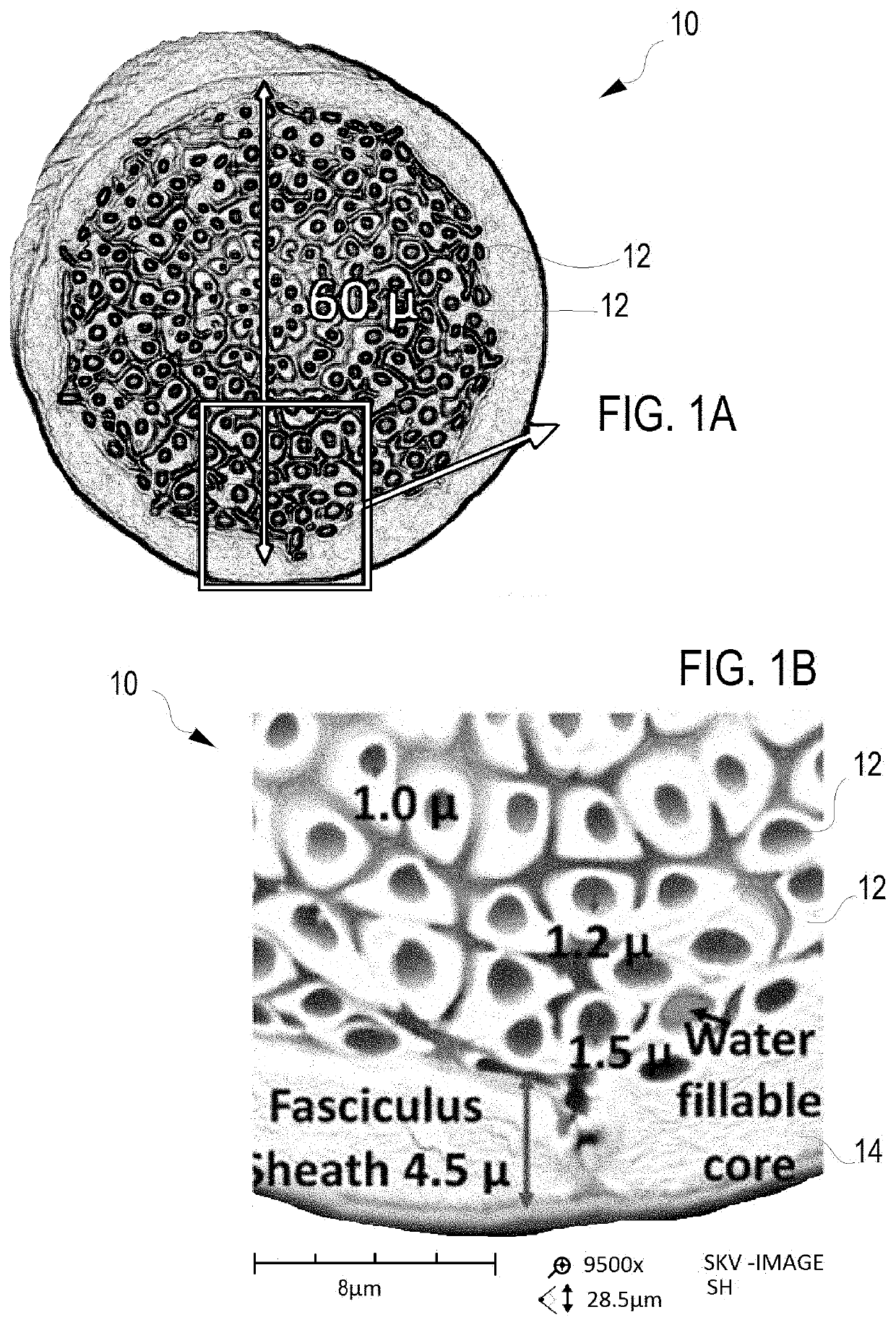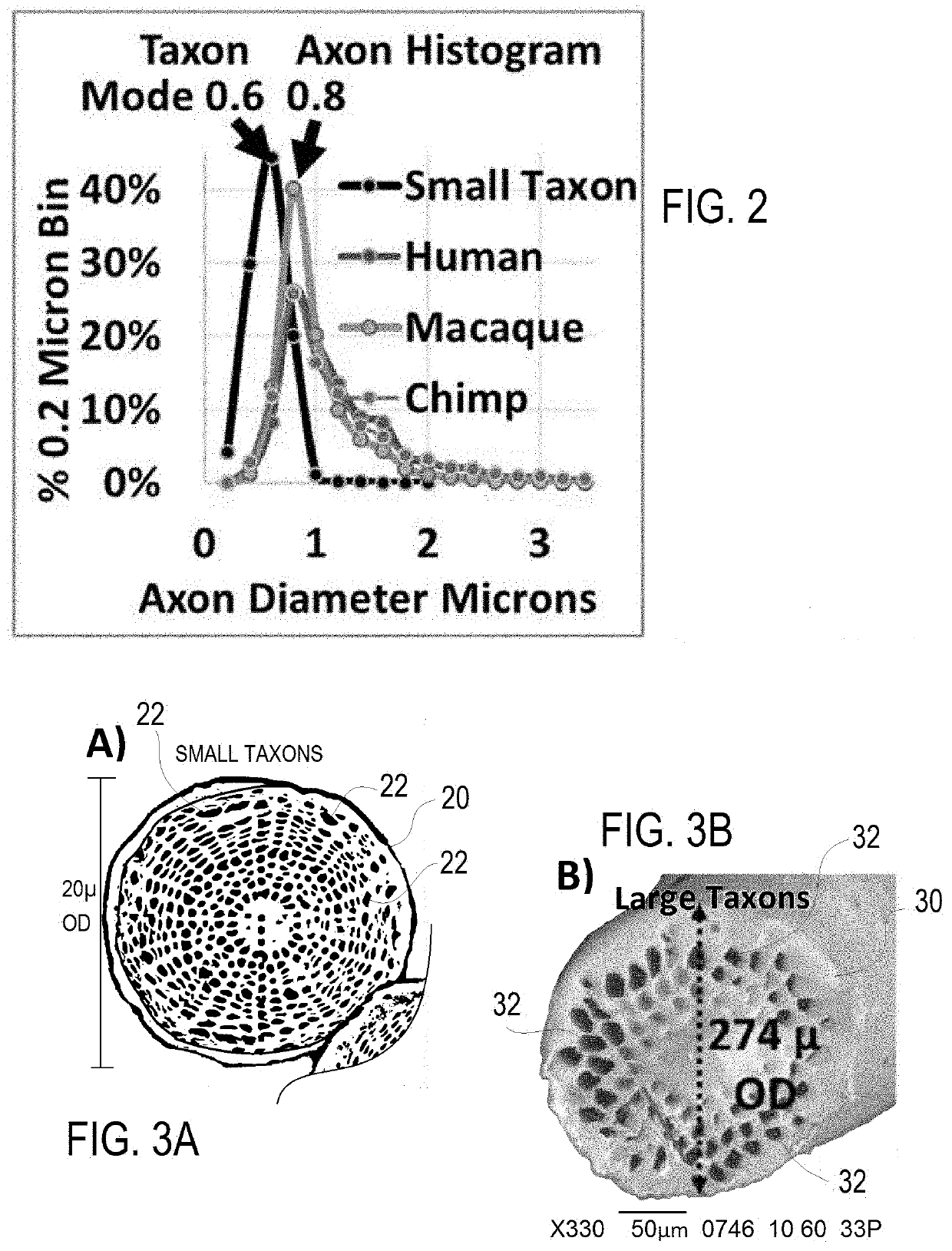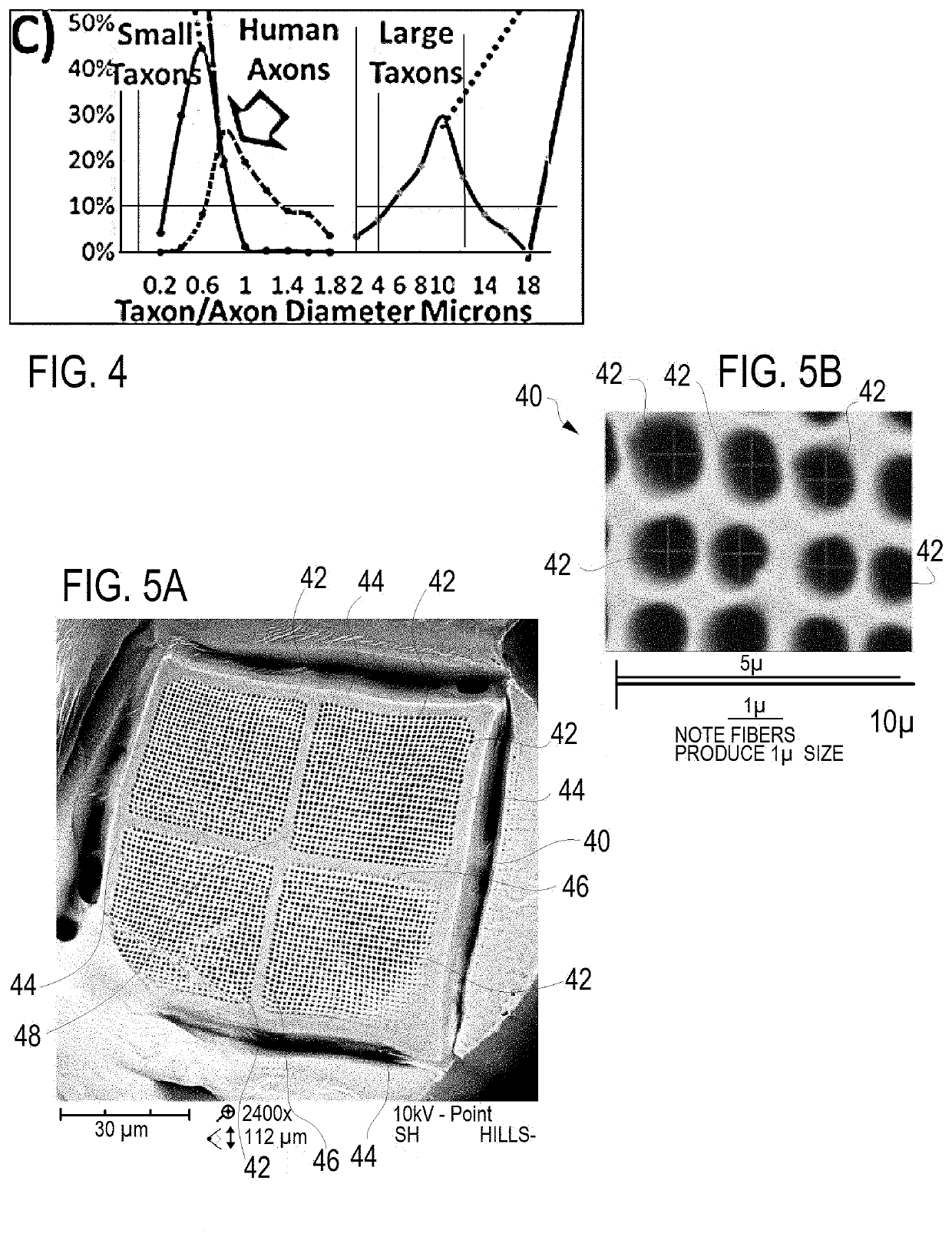MRI phantom having filaments of integral textile axon simulations and anisotropic homogeneity MRI phantom using the filaments
a technology of mri phantom and filaments, applied in the field of mri phantom, can solve the problems of not being able to reveal the endpoints of the brain tract on the surface, not being able to accurately follow a set of fibers when they cross another set, and not being able to achieve really cool and expensive images without practical application
- Summary
- Abstract
- Description
- Claims
- Application Information
AI Technical Summary
Problems solved by technology
Method used
Image
Examples
first embodiment
[0039]For fiber tracking phantoms there is a need to have tracking fibers that approximate human axons, which has proved difficult in the past. FIG. 1A is an image of taxon filament 10 according to the present invention. In this embodiment each taxon 12, or textile-based axon simulation, has an inner diameter of less than 2 microns, generally less than 1 micron. The taxon filament 10 has an outer diameter of about 60 microns. The individual separate taxons 12, which may be filled with water or other desired fluid, are bundled to form a taxon fiber 10 and a sheath 14 having a thickness of about 4.5 microns surrounds the bundled taxons 12 to form the taxon filament 10. In this embodiment, the peripheral modification to the bundled taxons 12 converting the taxon fiber to a taxon filament 10 is the addition of the outer sheath 14.
[0040]FIG. 2 is a chart or histogram that illustrates the inner diameter distribution range of the taxons 12 of the taxon filament 10 of FIGS. 1A and B. The ch...
second embodiment
[0041]FIG. 3A is an image of taxon fiber 20 according to the present invention. In this embodiment each taxon 22, or textile-based axon simulation, has an inner diameter of less than 2 microns, generally less than 1 micron. The taxon fiber 20 has an outer diameter of about 20 microns. In this embodiment the taxons 22 are integral to each other within the taxon fiber 20 as they share common walls. Within the meaning of this application “integral” taxons are those, such as taxons 22 of taxon fiber 20 that share common walls. The taxons 22 are formed in concentric annular arrays within the taxon fiber 20 around a circular central core 24 and results in much greater or tighter packing of axons within a given space. The taxon fiber 20 contains more than 200 fibers with average inside diameter (ID) of less than 1000 nanometers, with the specific illustrated embodiment containing 540 taxons 22 with average inside diameter (ID) of 595 nanometers. Again, the individual integrated taxons 22 m...
fourth embodiment
[0044]FIG. 5A is a scanning microscope image of taxon filament 40 according to the present invention having a rectangular array of integrated individual taxons 42. The taxon filament 40 shows a tight tolerance in the range of taxon inner diameters with each taxon 42 having about a 0.8-micron inner diameter. The taxons 42 are integral to each other within the taxon filament 40 as they share common walls and the common walls have a narrow portion or minimum wall thickness of about 0.2 microns. As noted above, within the meaning of this application “integral” taxons are those, such as taxons 42 of taxon filament 40 that share common walls. The taxons 42 are formed in a close pact rectangular array within the taxon filament 40. Also included are structural features such as outer frame 44 and crossing support ribs 46. The outer frame 44 and support ribs or struts 46 minimize taxon 42 damage during manufacturing of specific phantoms. Additionally, some taxons are omitted adjacent one corn...
PUM
| Property | Measurement | Unit |
|---|---|---|
| inner diameter | aaaaa | aaaaa |
| inner diameter | aaaaa | aaaaa |
| inner diameter | aaaaa | aaaaa |
Abstract
Description
Claims
Application Information
 Login to View More
Login to View More - R&D
- Intellectual Property
- Life Sciences
- Materials
- Tech Scout
- Unparalleled Data Quality
- Higher Quality Content
- 60% Fewer Hallucinations
Browse by: Latest US Patents, China's latest patents, Technical Efficacy Thesaurus, Application Domain, Technology Topic, Popular Technical Reports.
© 2025 PatSnap. All rights reserved.Legal|Privacy policy|Modern Slavery Act Transparency Statement|Sitemap|About US| Contact US: help@patsnap.com



